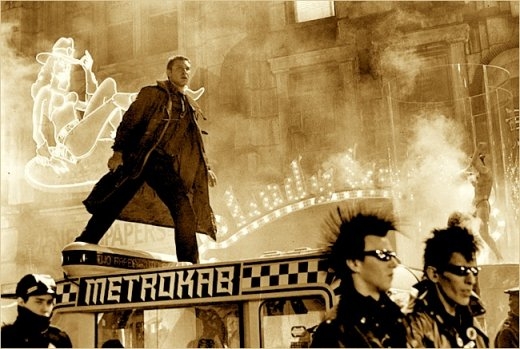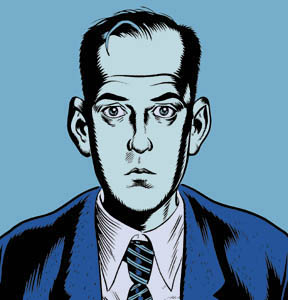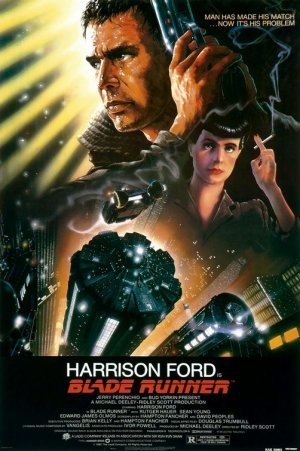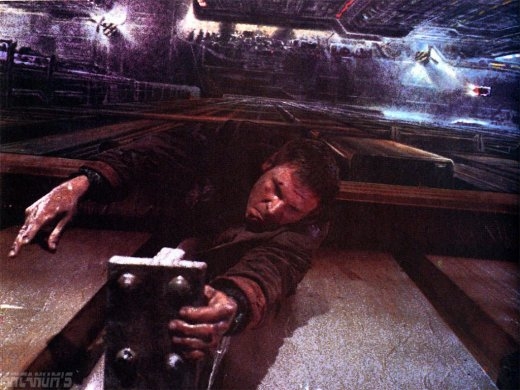
 BY MATTHEW DADDONA It is a curious symptom of our modern digital world — where the DNA of art can be easily transposed, transported or transformed with the click of a mouse, a process that used to take years and a cast of thousands in the analog age — that the basic premise of a landmark film can be altered in the director’s cut DVD version twenty years after the fact. This is literally rewriting, or more accurately re-editing, history.
BY MATTHEW DADDONA It is a curious symptom of our modern digital world — where the DNA of art can be easily transposed, transported or transformed with the click of a mouse, a process that used to take years and a cast of thousands in the analog age — that the basic premise of a landmark film can be altered in the director’s cut DVD version twenty years after the fact. This is literally rewriting, or more accurately re-editing, history.
Prior to its initial theatrical release back in 1982, Warner Bros studio execs were so convinced that audiences wouldn’t be able to follow the film’s convoluted plot that they forced director Ridley Scott to tack on a happy ending voice-over by Harrison Ford’s character that ties up every thing in a nice package as the bounty hunter and his beautiful bounty ride off into the artificial sunset. This ending was the first to go when Scott put together the first of what would prove to be several director’s cuts in 1992. Scott eliminated the voice-over and restored the initial ending which hints strongly that Ford’s heroic Rick Deckard is a replicant, the film’s term to describe human clones unaware of their own artificiality. In fact, in recent interviews Scott has confirmed this premise. This is sort of like the Warren Commission coming out in paperback, and in it Lee Harvey Oswald is just a patsy.
 Blade Runner: The Final Cut is the most definitive version, or versions, to ever hit fans, who can choose between the 2-disc version, the 4-disc version, or the Ultimate 5-disc collection. The 5-disk package features Ridley Scott’s “final” cut of the film, the “Dangerous Days” documentary, 1982 theatrical version, 1982 international version, 1992 director’s cut and the authentic “workprint” version. In compiling the DVD collection, Scott resisted the temptation to tweak the movie’s visual affect with the latest CGI advancements, relying instead on the stunning original special effects mixed with modest enhancements and restorations to the overall video and sound. Doing so not only gives Blade Runner its most compelling ride yet, but speaks to younger and older generations in a way that makes it terrifying to accept what Ridley’s future, or ours for that matter, holds.
Blade Runner: The Final Cut is the most definitive version, or versions, to ever hit fans, who can choose between the 2-disc version, the 4-disc version, or the Ultimate 5-disc collection. The 5-disk package features Ridley Scott’s “final” cut of the film, the “Dangerous Days” documentary, 1982 theatrical version, 1982 international version, 1992 director’s cut and the authentic “workprint” version. In compiling the DVD collection, Scott resisted the temptation to tweak the movie’s visual affect with the latest CGI advancements, relying instead on the stunning original special effects mixed with modest enhancements and restorations to the overall video and sound. Doing so not only gives Blade Runner its most compelling ride yet, but speaks to younger and older generations in a way that makes it terrifying to accept what Ridley’s future, or ours for that matter, holds.
Based on Philip K. Dick’s, Do Androids Dream of Electric Sheep?, the film stars Harrison Ford as the titular “blade runner,” a noirish, hard-boiled detective who serves a sort of terminator of rogue replicants, tasked with tracking down five evil replicants who have escaped from off-world colonies and wandered into Los Angeles, circa 2019. The chase becomes the film’s center as well as the most pervading theme: separating what is “real” from what is “fake.” Though replicants are human-like androids trained to perform skilled slave labor on Earth’s interplanetary colonies, they are set to self-destruct after four years — which is also the point where, as per their design, they start developing human emotions and feelings, a clear threat to the border between humans and replicants. Because humans have emotions, they are more authentic, goes the films logic. I feel, therefore I am.
However, things become complicated when Deckard falls for Rachael (Sean Young), the beautiful Betty Page-esque assistant to the man who invented the replicants. He comes to suspect that she is a replicant but ignores his duties as a “blade runner” and loves her for what she is, not represents. Like most other replicants, she doesn’t know if she is one or not. Further confusing the audience’s sympathies is the emerging implications that Deckard is himself a replicant. Do we root for the humans or the replicants? Really, it doesn’t matter. The human race has run, the machines have already won. In Ridley’s scuzzy simulacrum of ultramodern Los Angeles painted grey and rainy, surrounded by vast buildings and a prevailing air of malevolence, intersected by floating cars and giant TV-screen billboards promising “off-world” paradise — what is real? Twenty-five years and four direct cuts later the answer remains the same: nothing.

ABOUT THE AUTHOR: Matthew Daddona is a freshman at Temple. He was born eight years after Blade Runner was first released.
